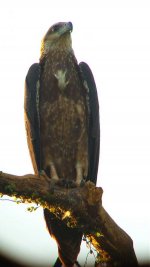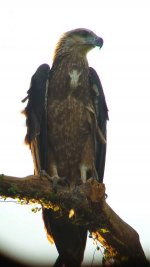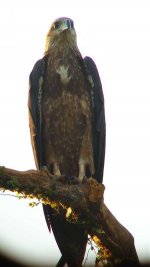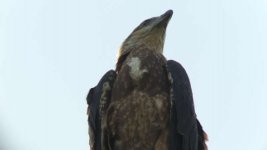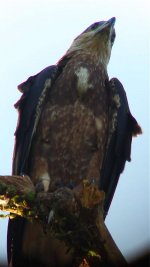I was able to get a few shots of a juvenile white bellied sea eagle today. Unfortunately, the subject was back lit, so I have some chromatic abberation (sp?) to deal with and the other problems associated with this circumstance.
My biggest problem is the noise I appear to be getting from the LX3. Does a compact like the LX3 have a crop factor? If I try to zoom in an look at feather detail, I see a very noisy image. The photos I have attached were taken from 50m (below shots) to 75m away. Am I seeing what I should see from distances like these. I am using a 10mm Televue Radian eye piece and a 555mm WO Zenithstar ED II (APOGrade) telescope. I had an easier time using the scope today because a simple adapter setup I put together last weekend.
One other thing about astro scopes that is driving me crazy. Every time I want to shoot at a steep angle, it is almost impossible because the focuser basically 'falls' to limits of its focus range and cannot be adjusted. Do I need a different type of focuser?
Generally would appreciate any tips or critique anyone has to offer.
Scott
My biggest problem is the noise I appear to be getting from the LX3. Does a compact like the LX3 have a crop factor? If I try to zoom in an look at feather detail, I see a very noisy image. The photos I have attached were taken from 50m (below shots) to 75m away. Am I seeing what I should see from distances like these. I am using a 10mm Televue Radian eye piece and a 555mm WO Zenithstar ED II (APOGrade) telescope. I had an easier time using the scope today because a simple adapter setup I put together last weekend.
One other thing about astro scopes that is driving me crazy. Every time I want to shoot at a steep angle, it is almost impossible because the focuser basically 'falls' to limits of its focus range and cannot be adjusted. Do I need a different type of focuser?
Generally would appreciate any tips or critique anyone has to offer.
Scott
Attachments
Last edited:




